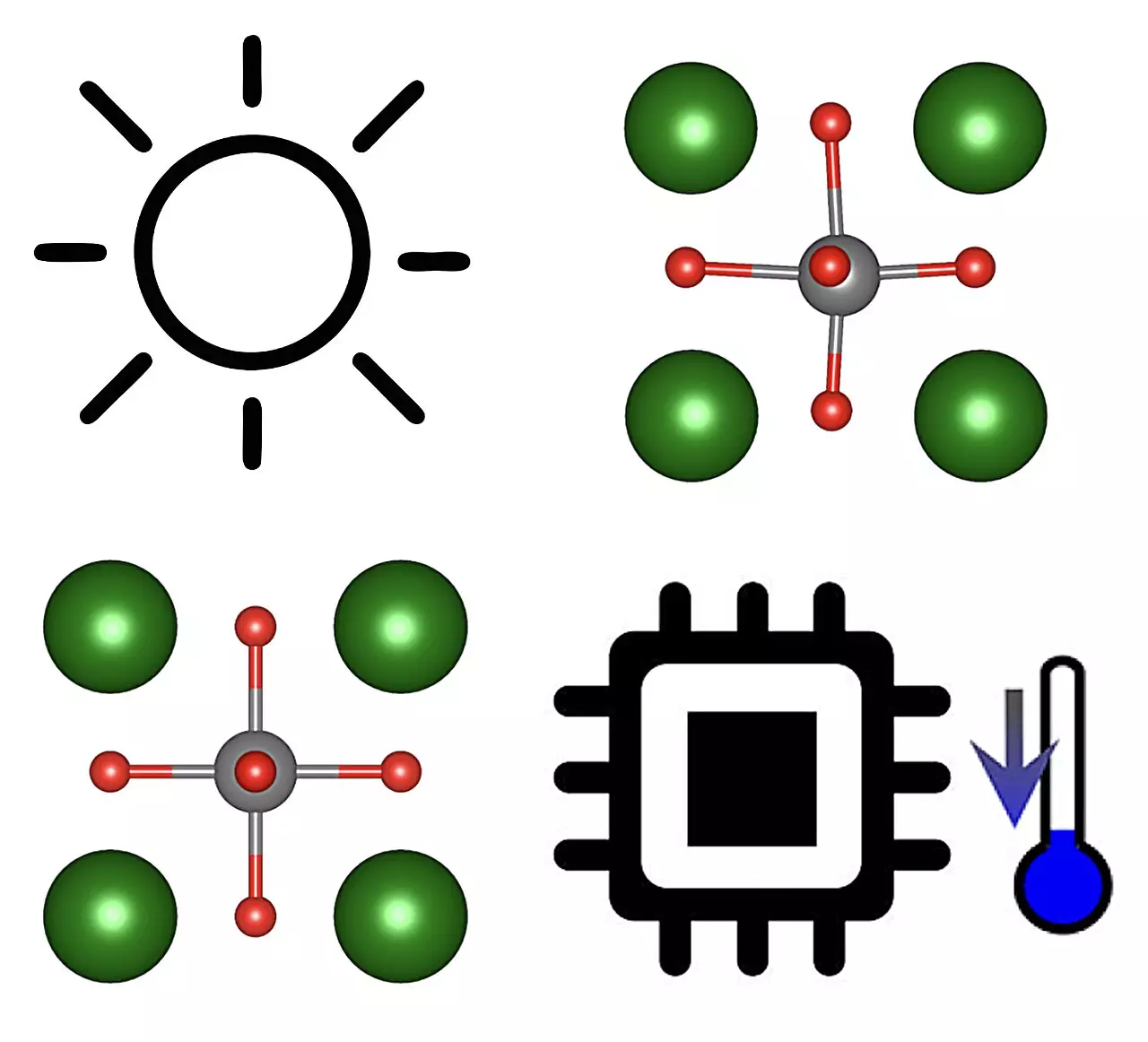In contemporary refrigeration technology, there is an urgent need to transition away from conventional systems that primarily rely on harmful gases and mechanical action. As global temperatures rise and environmental concerns intensify, innovative solutions are sought to reduce carbon footprints and improve energy efficiency. One such promising avenue is solid-state cooling, which utilizes solid materials instead of gases or liquids to achieve refrigeration. This method has the potential to revolutionize cooling applications, offering a more sustainable alternative that minimizes greenhouse gas emissions.
Despite the allure of solid-state cooling, implementing conventional caloric effects has proven challenging. These effects, fundamental to materials that enable solid-state refrigeration, operate optimally within a limited temperature range and require specific conditions for their effectiveness. As a result, their application in real-world cooling systems is often restricted. Traditional materials struggle to accommodate a broad array of temperature variations, leading to the pursuit of new materials and mechanisms capable of overcoming these limitations.
Recent research by the Institut de Ciència de Materials de Barcelona and Universitat Politècnica de Catalunya has unveiled a revolutionary approach to solid-state cooling. Researchers, led by Claudio Cazorla, have proposed the viability of utilizing ferroelectric perovskites for photocaloric effects—mechanisms that harness light to induce phase transitions. This advancement could pave the way for lighting-driven refrigeration methods that outperform current technologies. The theory, articulated in their paper published in Physical Review Letters, posits that these materials can exhibit giant photocaloric effects across a significantly wider temperature range compared to traditional caloric systems.
The core of this research lies in the photocaloric effect, which arises when a ferroelectric material transitions from a ferroelectric state (characterized by spontaneous polarization) to a paraelectric state upon exposure to light. This shift can lead to large changes in entropy and enables efficient cooling cycles. The implications of this discovery are profound; they suggest that harnessing light for cooling could potentially offer an energy-efficient alternative that is not bound by the narrow operational windows that limit conventional materials.
What sets photocaloric effects apart from other cooling methods, such as magnetocaloric, electrocaloric, and mechanocaloric techniques, is their adaptability to a broader range of temperatures—potentially spanning several hundred degrees Kelvin. Conventional caloric methods typically function within mere 10K intervals, making the prospect of light-induced phase transitions in ferroelectrics particularly appealing for diverse applications.
The researchers speculate that materials such as BaTiO3 and KNbO3 may serve as viable candidates for demonstrating the predicted photocaloric effects. The ease of using light as a triggering field simplifies the design of cooling systems, as there is no need for complex electrode configurations. This feature not only streamlines manufacturing but also enhances miniaturization, making it possible to implement these cooling systems in compact technologies such as CPUs and circuit boards.
Additionally, given that the photocaloric effects could persist from room temperature down to absolute zero, the potential for developing cryogenic cooling systems for advanced applications—such as quantum computing—remains a tantalizing prospect. As researchers delve deeper into this field, they are also exploring alternative materials beyond ferroelectrics and investigating the role of dimensionality, especially in two-dimensional materials, which may also demonstrate light-induced cooling capabilities.
The exploration of photocaloric effects presents an exciting frontier in solid-state cooling technology. Researchers like Cazorla and Rurali are spearheading investigations into the application of these principles in real-world scenarios. The implications of their findings can inspire further research and innovation in cooling technologies that reduce environmental impact. As we navigate a path toward more sustainable technology, the efficiency and broad applicability of photocaloric cooling could mark a significant milestone in our pursuit of eco-friendly refrigeration solutions.
The journey toward practical applications is just beginning, and as we broaden our understanding of material properties and phase transitions, we edge closer to a future where environmentally friendly cooling is not just a goal, but a reality. With continued research and development, solid-state cooling technologies may redefine how we approach refrigeration in an increasingly energy-conscious world.


Leave a Reply